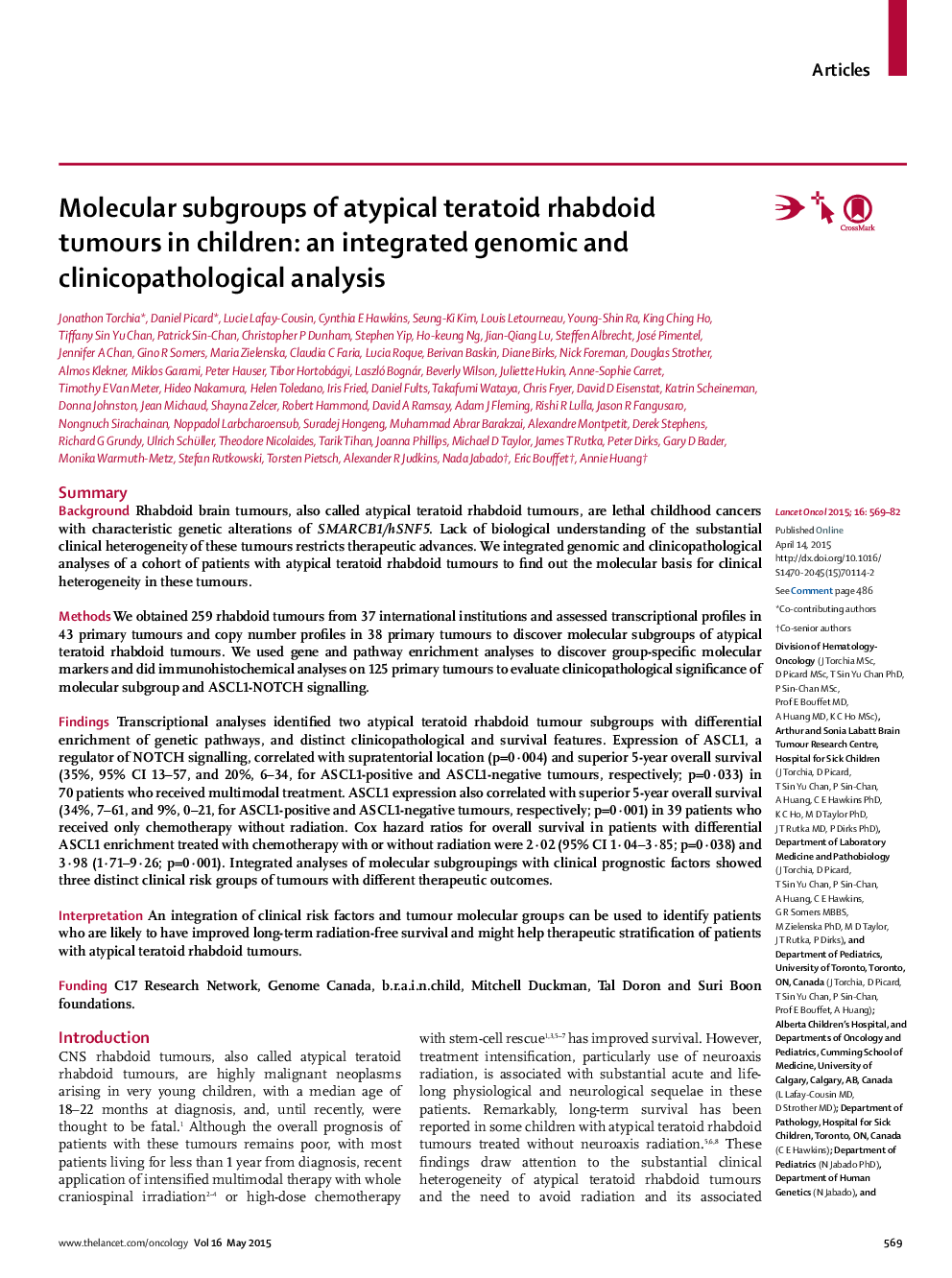| Article ID | Journal | Published Year | Pages | File Type |
|---|---|---|---|---|
| 3994004 | The Lancet Oncology | 2015 | 14 Pages |
SummaryBackgroundRhabdoid brain tumours, also called atypical teratoid rhabdoid tumours, are lethal childhood cancers with characteristic genetic alterations of SMARCB1/hSNF5. Lack of biological understanding of the substantial clinical heterogeneity of these tumours restricts therapeutic advances. We integrated genomic and clinicopathological analyses of a cohort of patients with atypical teratoid rhabdoid tumours to find out the molecular basis for clinical heterogeneity in these tumours.MethodsWe obtained 259 rhabdoid tumours from 37 international institutions and assessed transcriptional profiles in 43 primary tumours and copy number profiles in 38 primary tumours to discover molecular subgroups of atypical teratoid rhabdoid tumours. We used gene and pathway enrichment analyses to discover group-specific molecular markers and did immunohistochemical analyses on 125 primary tumours to evaluate clinicopathological significance of molecular subgroup and ASCL1-NOTCH signalling.FindingsTranscriptional analyses identified two atypical teratoid rhabdoid tumour subgroups with differential enrichment of genetic pathways, and distinct clinicopathological and survival features. Expression of ASCL1, a regulator of NOTCH signalling, correlated with supratentorial location (p=0·004) and superior 5-year overall survival (35%, 95% CI 13–57, and 20%, 6–34, for ASCL1-positive and ASCL1-negative tumours, respectively; p=0·033) in 70 patients who received multimodal treatment. ASCL1 expression also correlated with superior 5-year overall survival (34%, 7–61, and 9%, 0–21, for ASCL1-positive and ASCL1-negative tumours, respectively; p=0·001) in 39 patients who received only chemotherapy without radiation. Cox hazard ratios for overall survival in patients with differential ASCL1 enrichment treated with chemotherapy with or without radiation were 2·02 (95% CI 1·04–3·85; p=0·038) and 3·98 (1·71–9·26; p=0·001). Integrated analyses of molecular subgroupings with clinical prognostic factors showed three distinct clinical risk groups of tumours with different therapeutic outcomes.InterpretationAn integration of clinical risk factors and tumour molecular groups can be used to identify patients who are likely to have improved long-term radiation-free survival and might help therapeutic stratification of patients with atypical teratoid rhabdoid tumours.FundingC17 Research Network, Genome Canada, b.r.a.i.n.child, Mitchell Duckman, Tal Doron and Suri Boon foundations.
